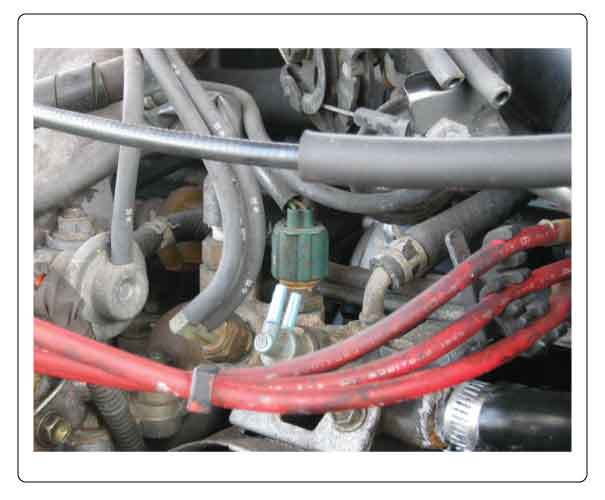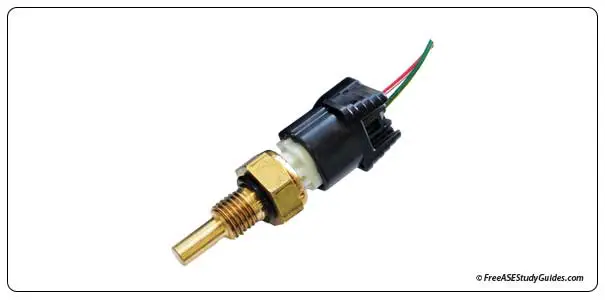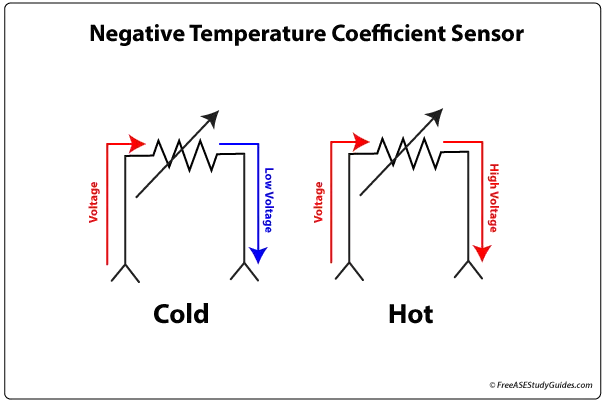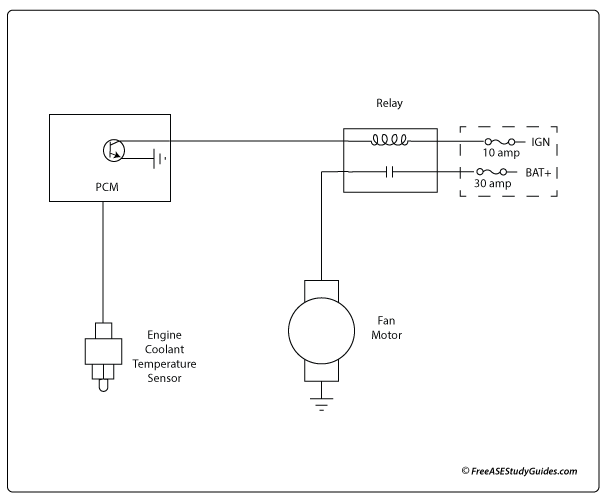Engine Coolant Temperature Sensors

An (ECT) Engine Coolant Temperature sensor is an NTC or negative temperature coefficient sensor. Located on the intake manifold or thermostat housing, it informs the ECM of the engine's coolant temperature. It contains a material that resists voltage when cold and allows it to pass through when it's hot. The ECM uses this varying voltage signal to determine engine temperature.

The engine's coolant is an indicator of engine temperature. The ECT sensor's tip protrudes into the coolant stream. Its job is to sense the temperature of the engine's coolant.
Engine coolant temperature sensors are variable resistors that use resistance to change a 5-volt reference signal from the ECM. The sensor's signal changes as the engine's coolant temperature changes. It's a vital component for maintaining an engine's normal operating temperature.

The coolant is cold when the engine sits for a while. The voltage signal from the ECT will be low because the sensor's resistance is blocking the voltage flow. As the engine's temperature increases, the sensor allows more voltage to pass through, and the ECM receives a higher voltage signal from the ECT, indicating warm-up.

The ECM activates components like the engine's cooling fans to maintain proper engine operating temperature. It uses different strategies programmed into its lookup tables for hot and cold operating conditions. This signal will affect EGR flow, fuel mixtures, and delay torque converter clutch or A/C compressor engagement.

Excessive resistance in the connector or anywhere in the circuit alters the signal, increasing injector pulse width and advancing the engine's ignition timing.